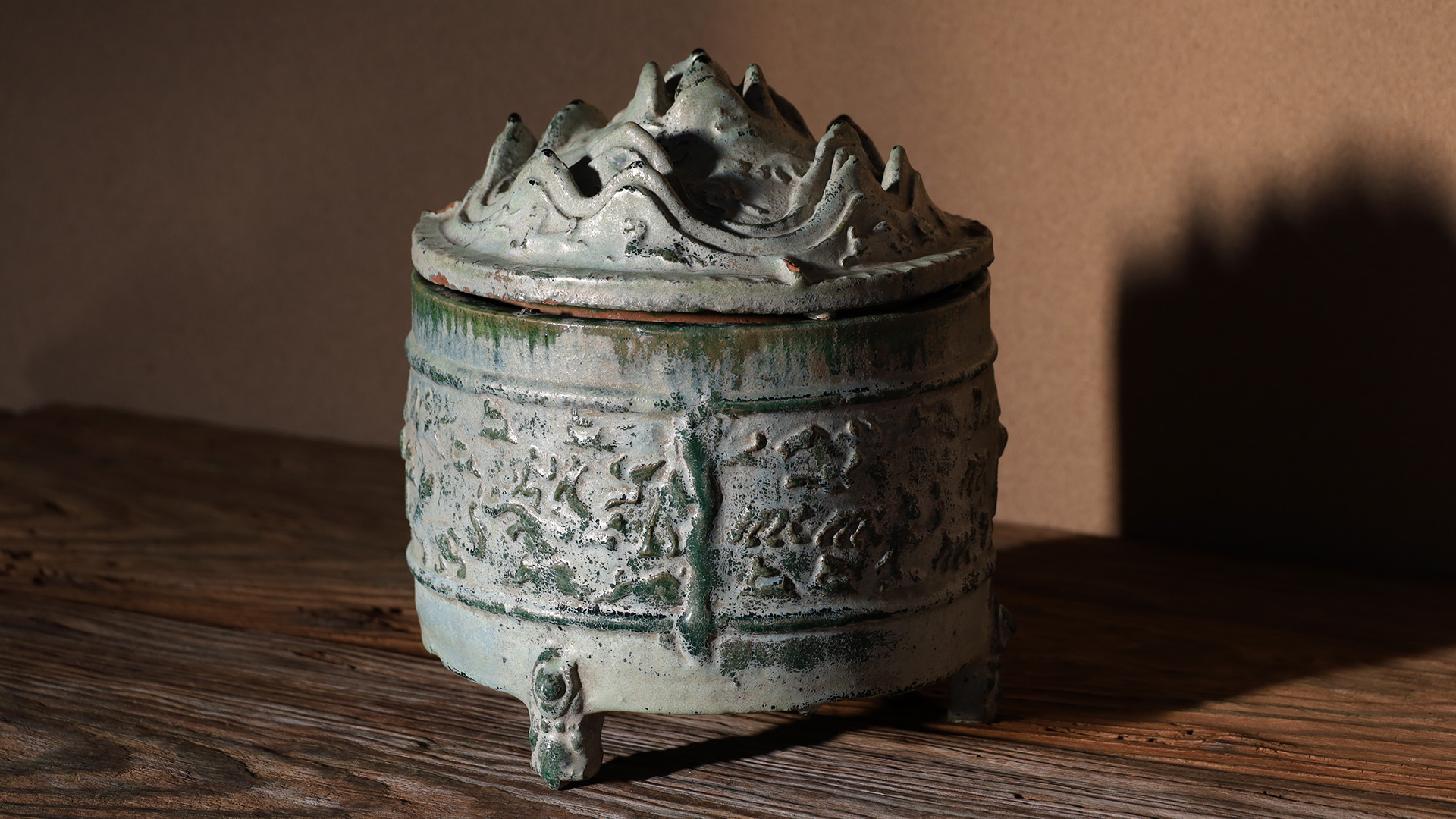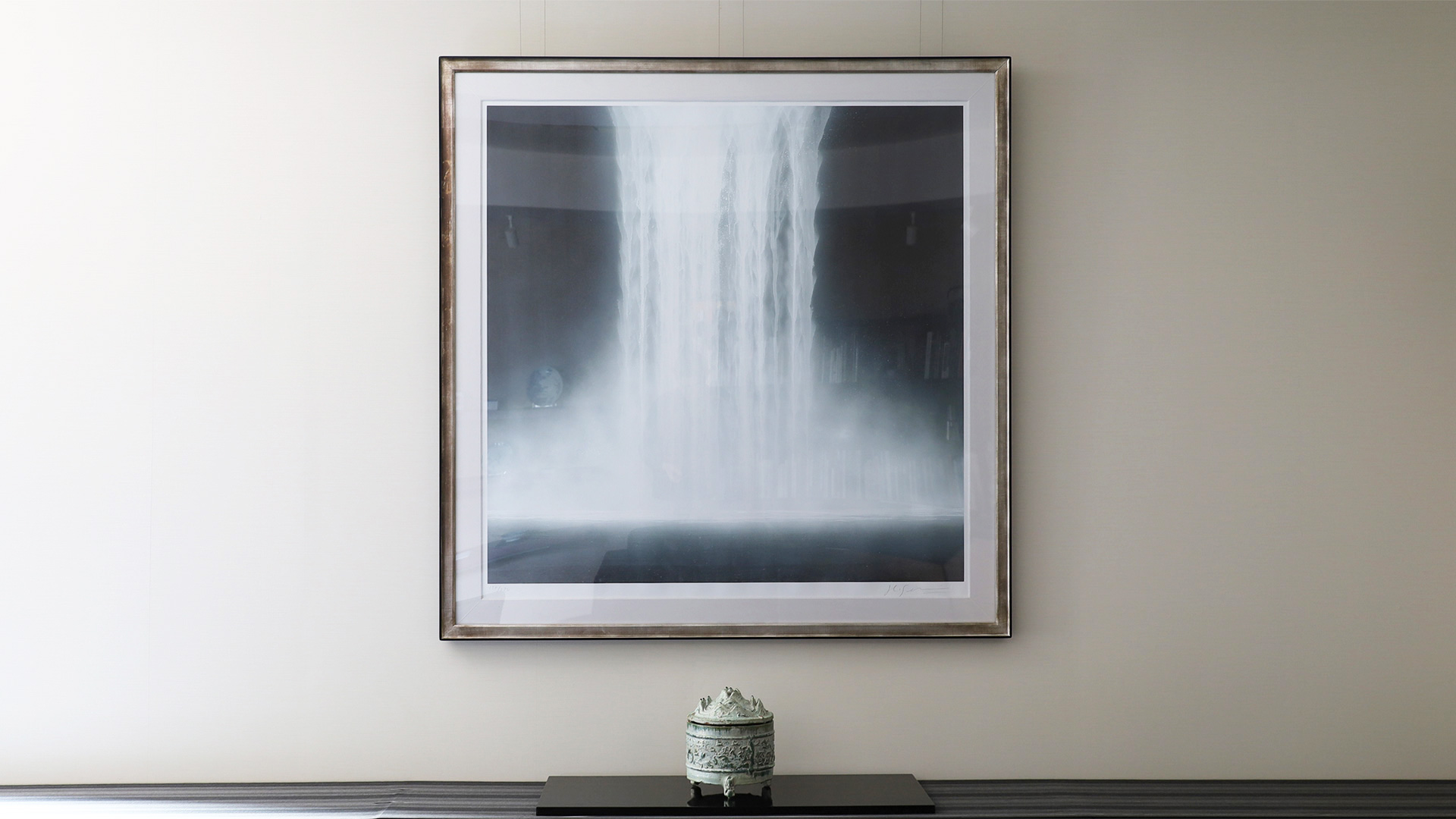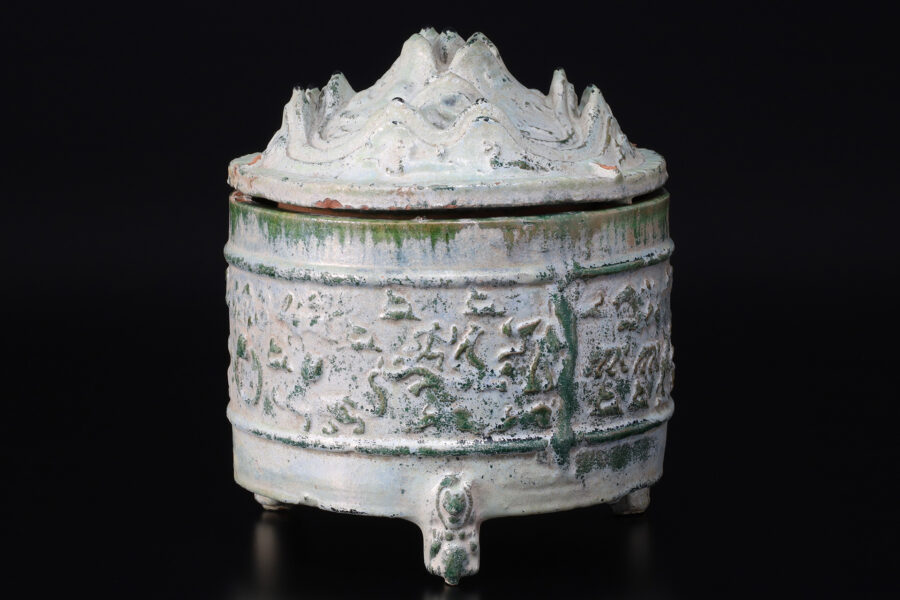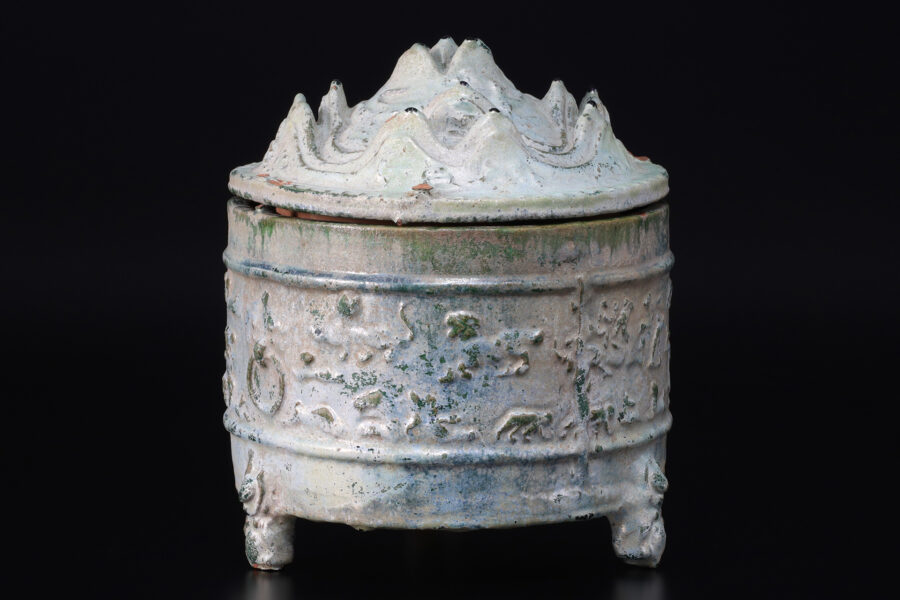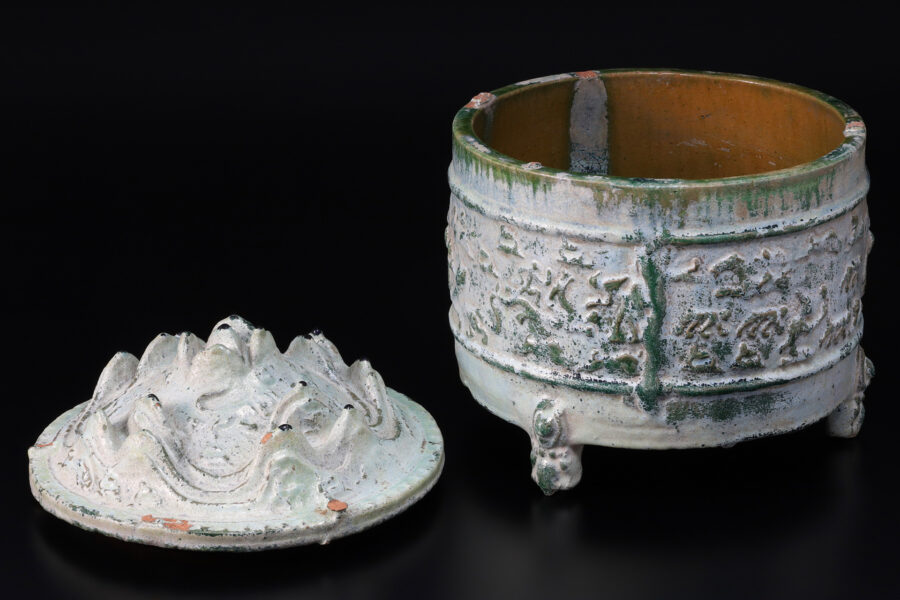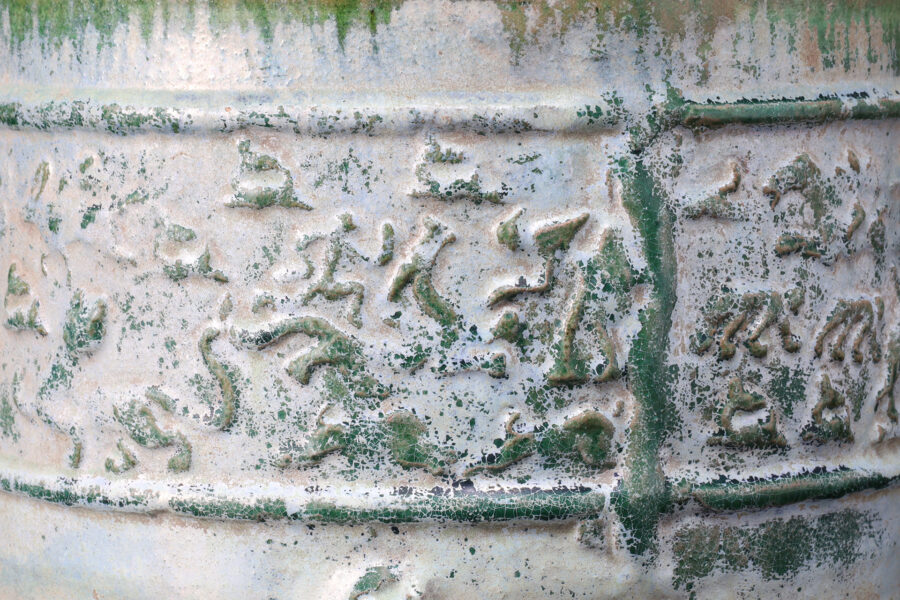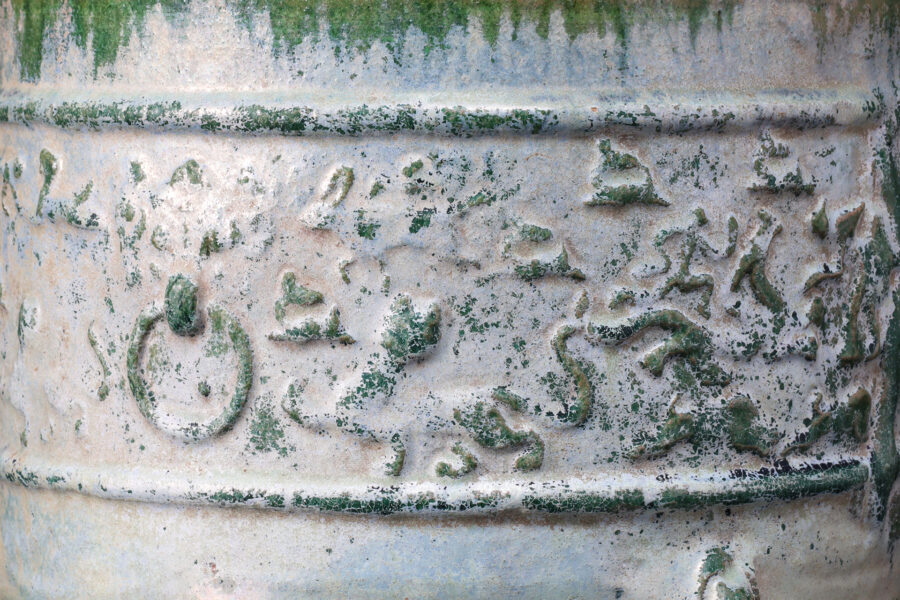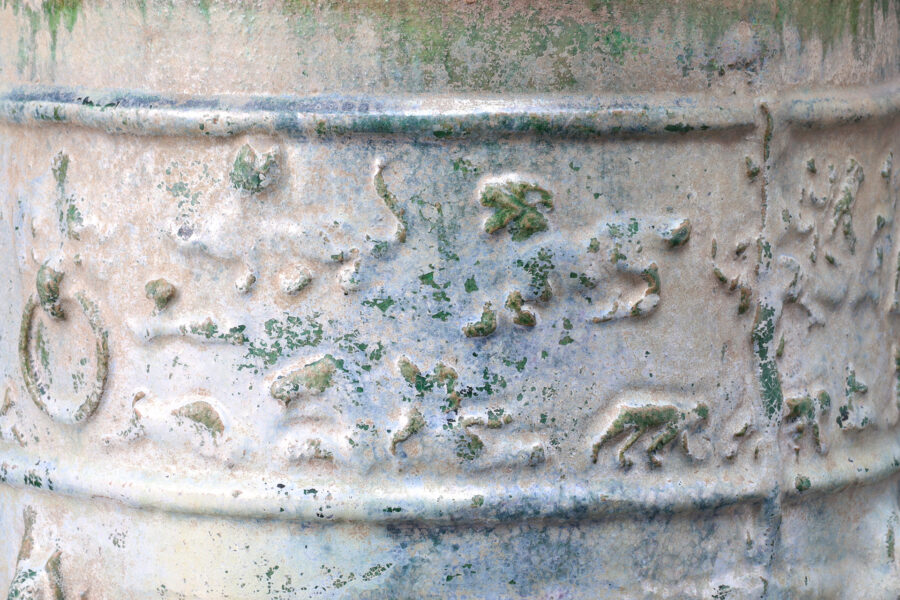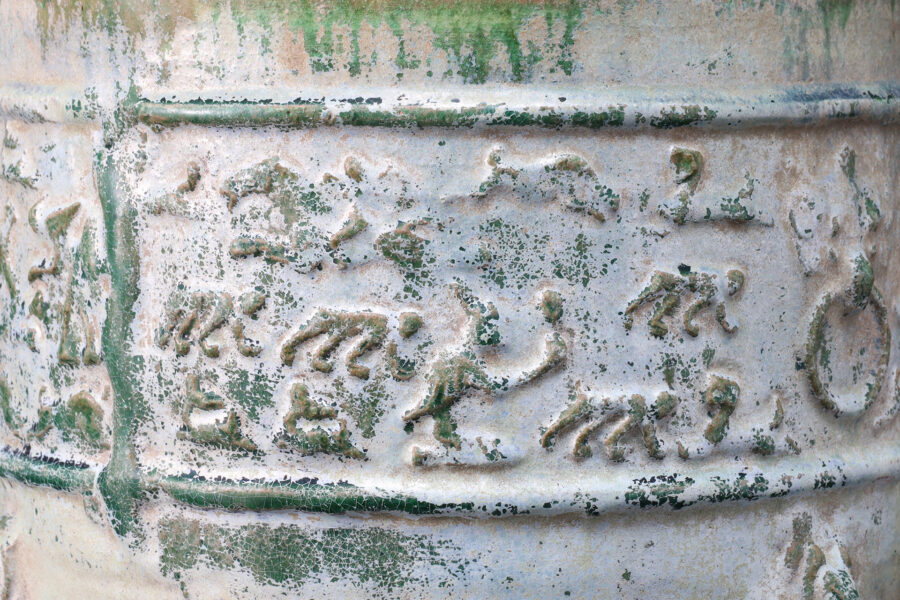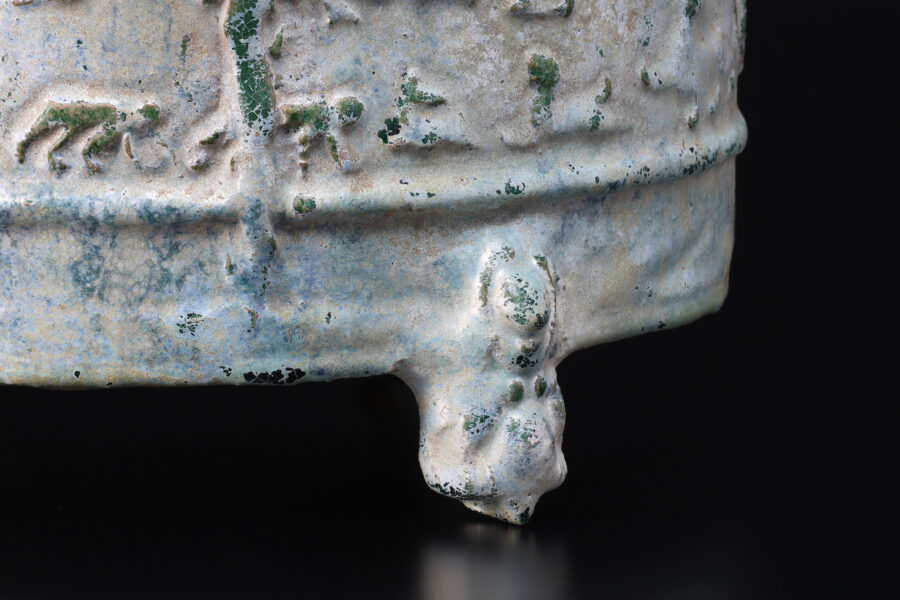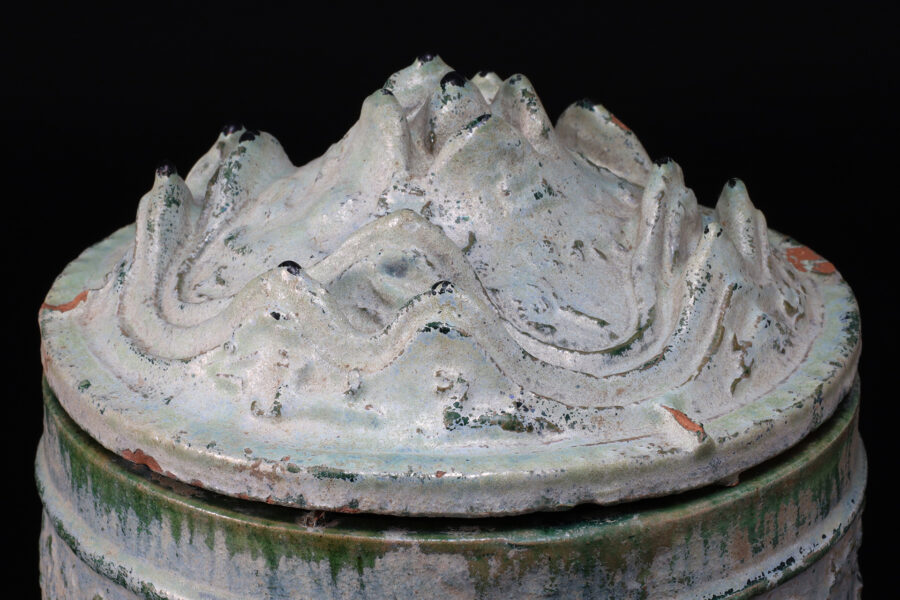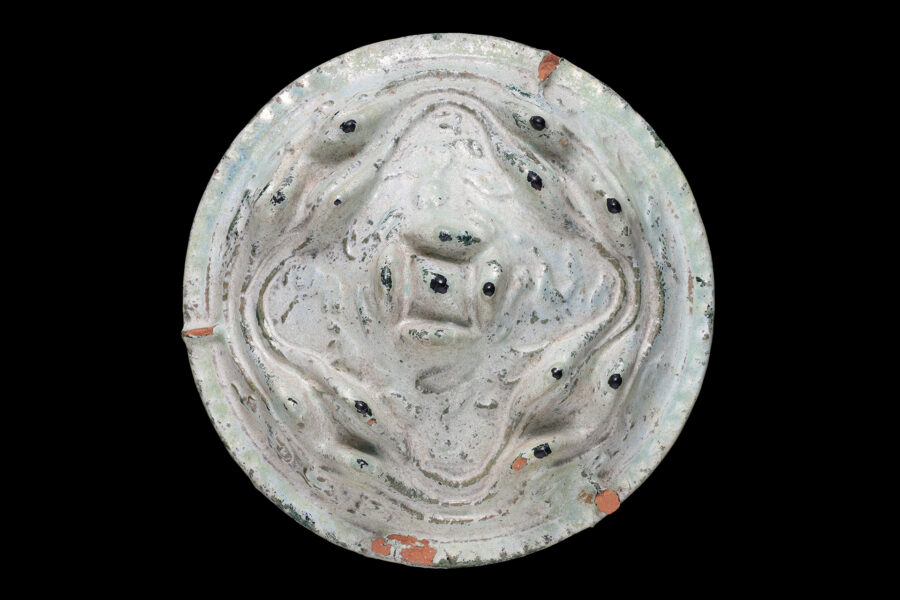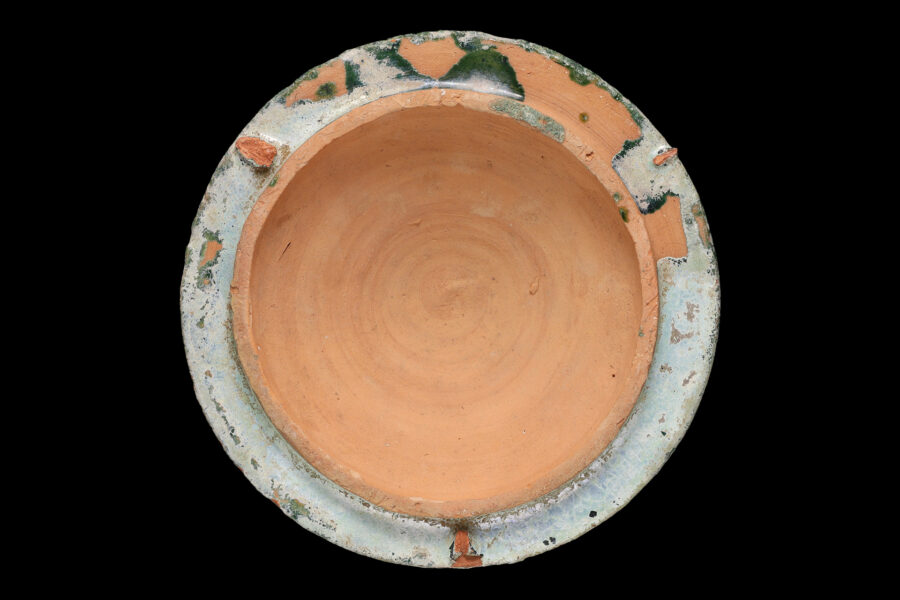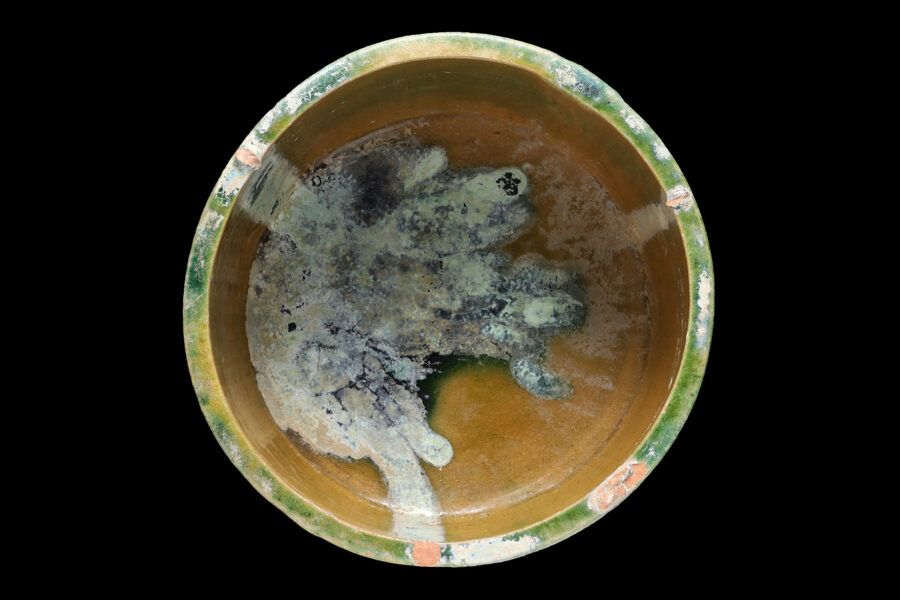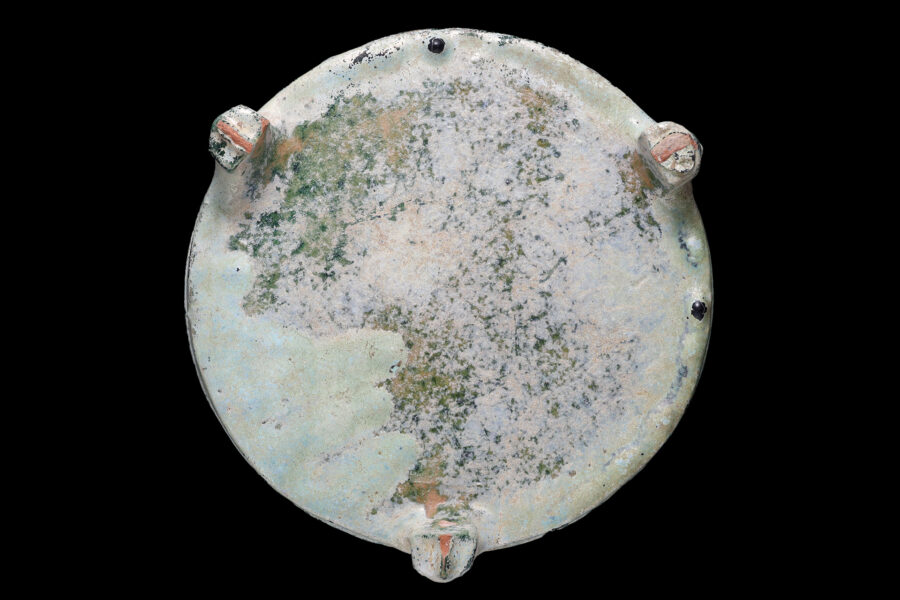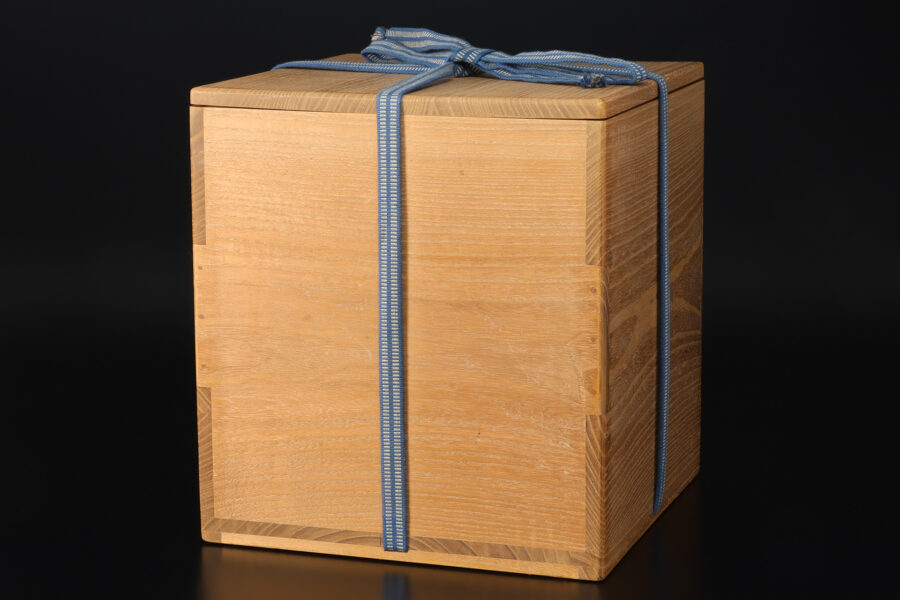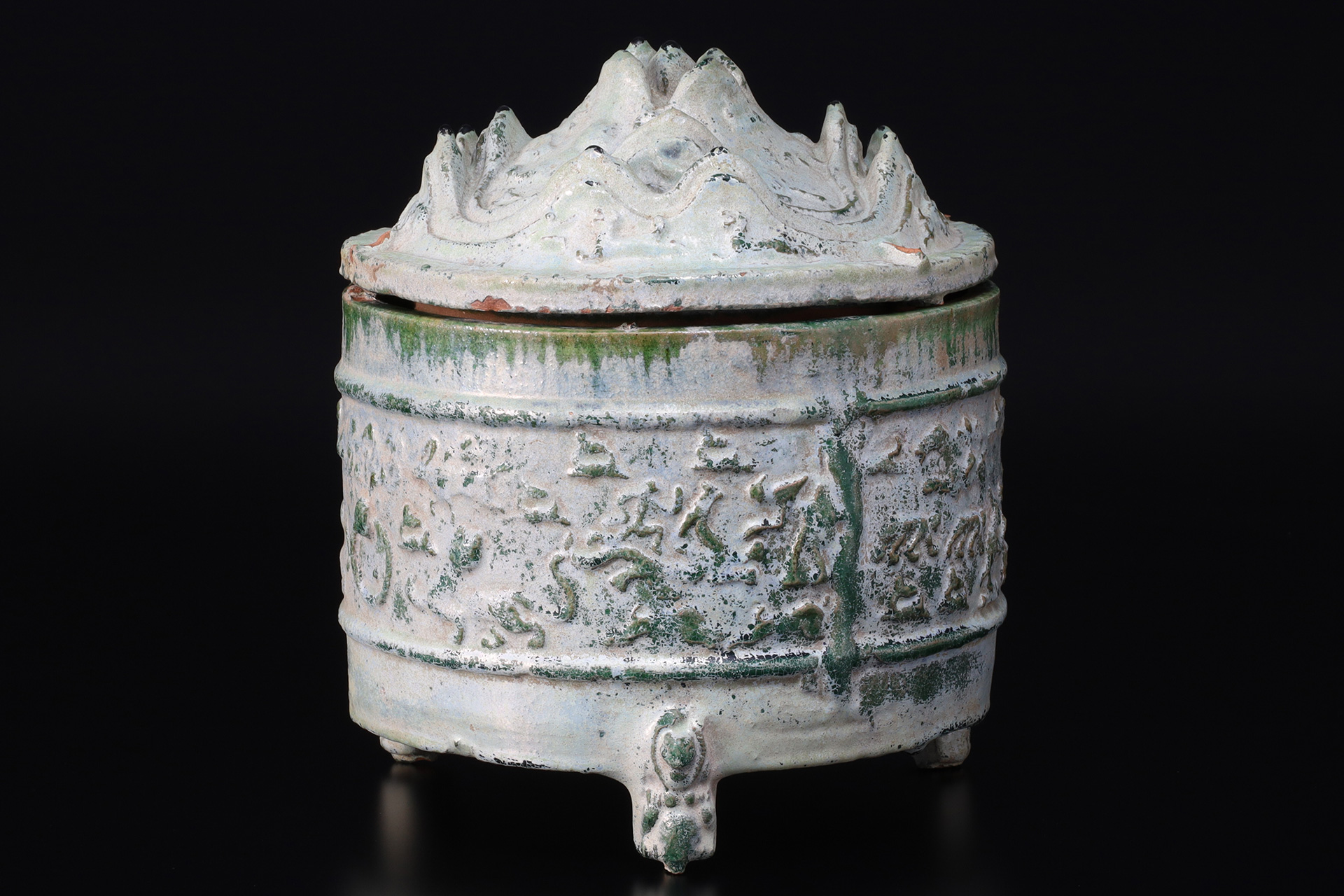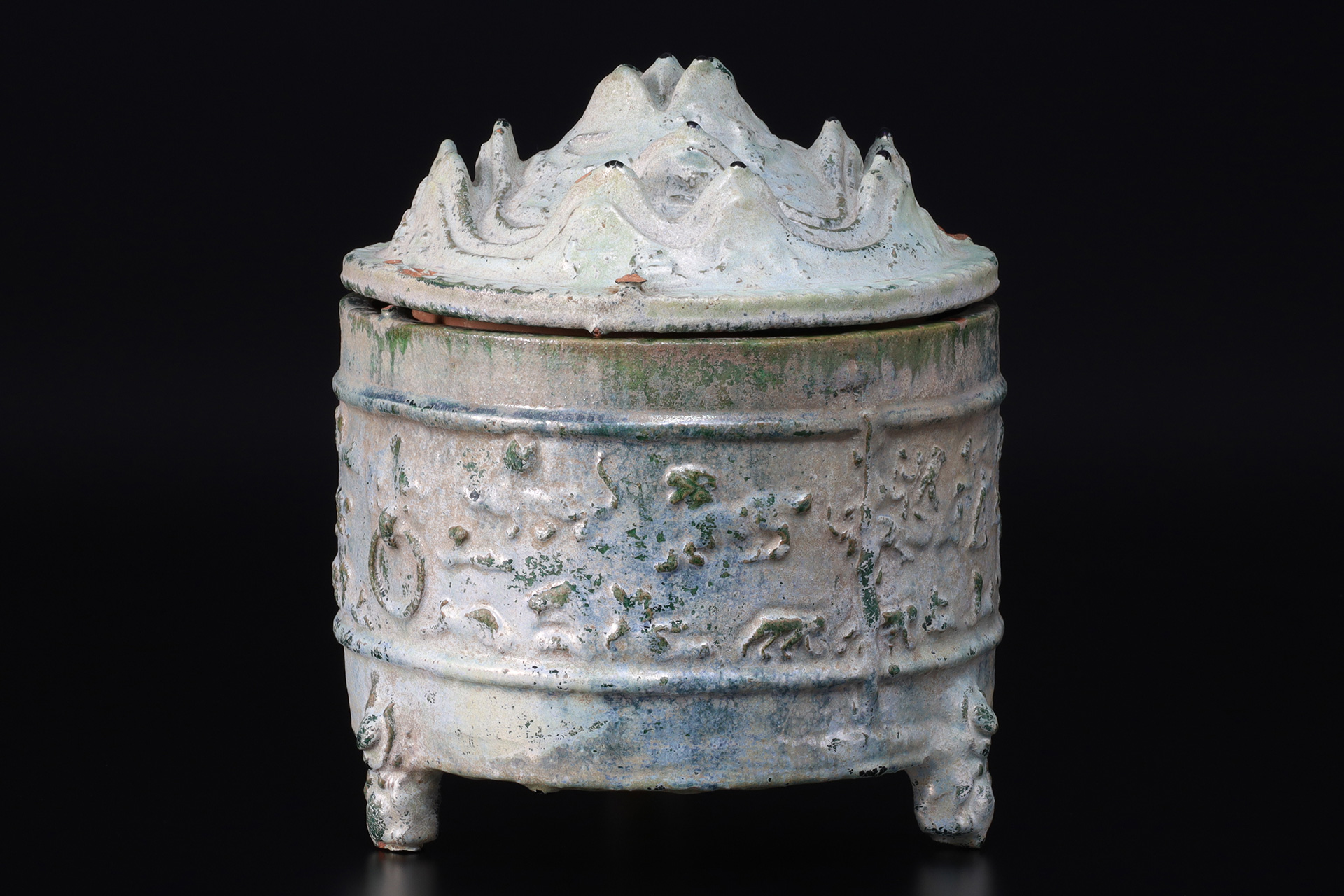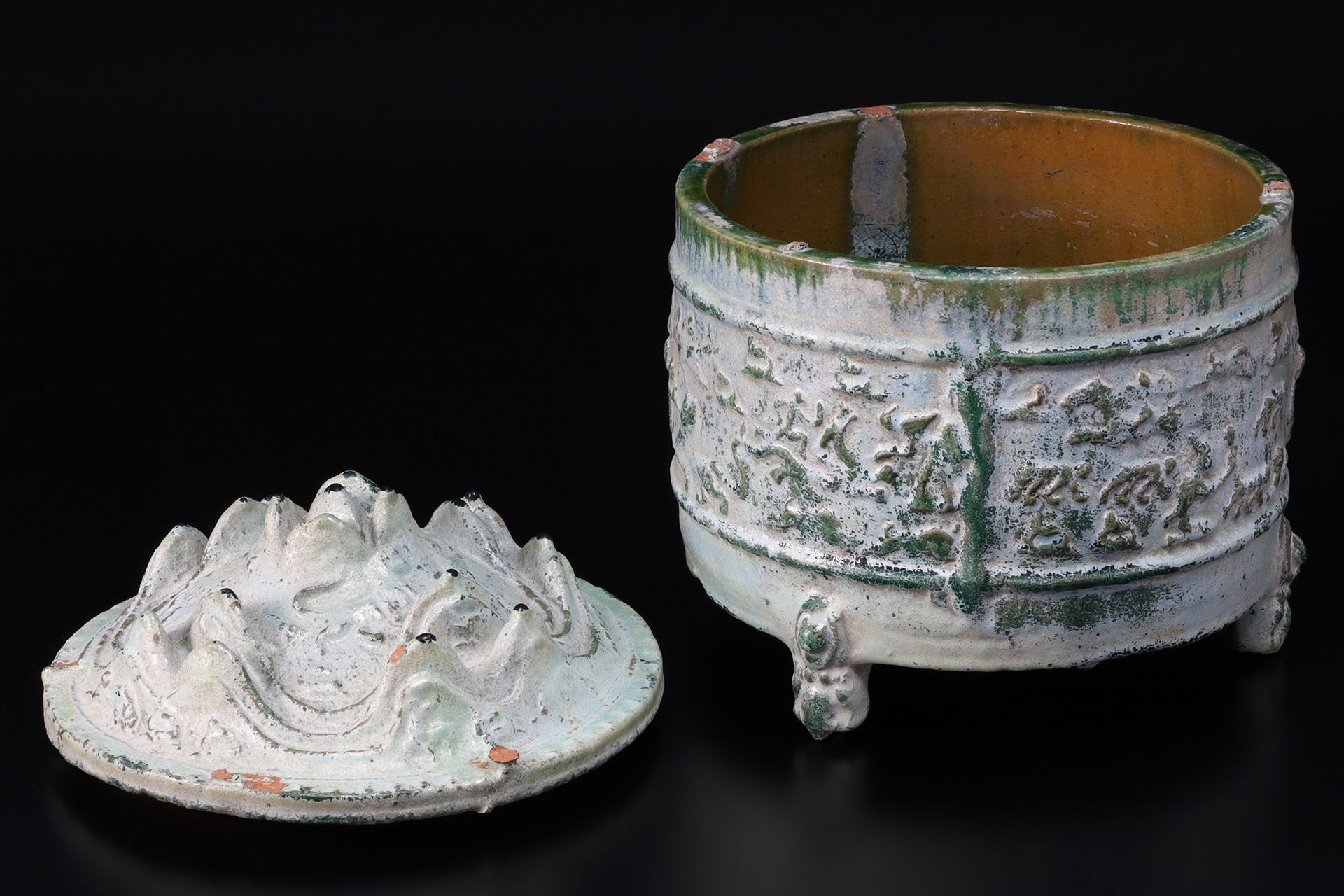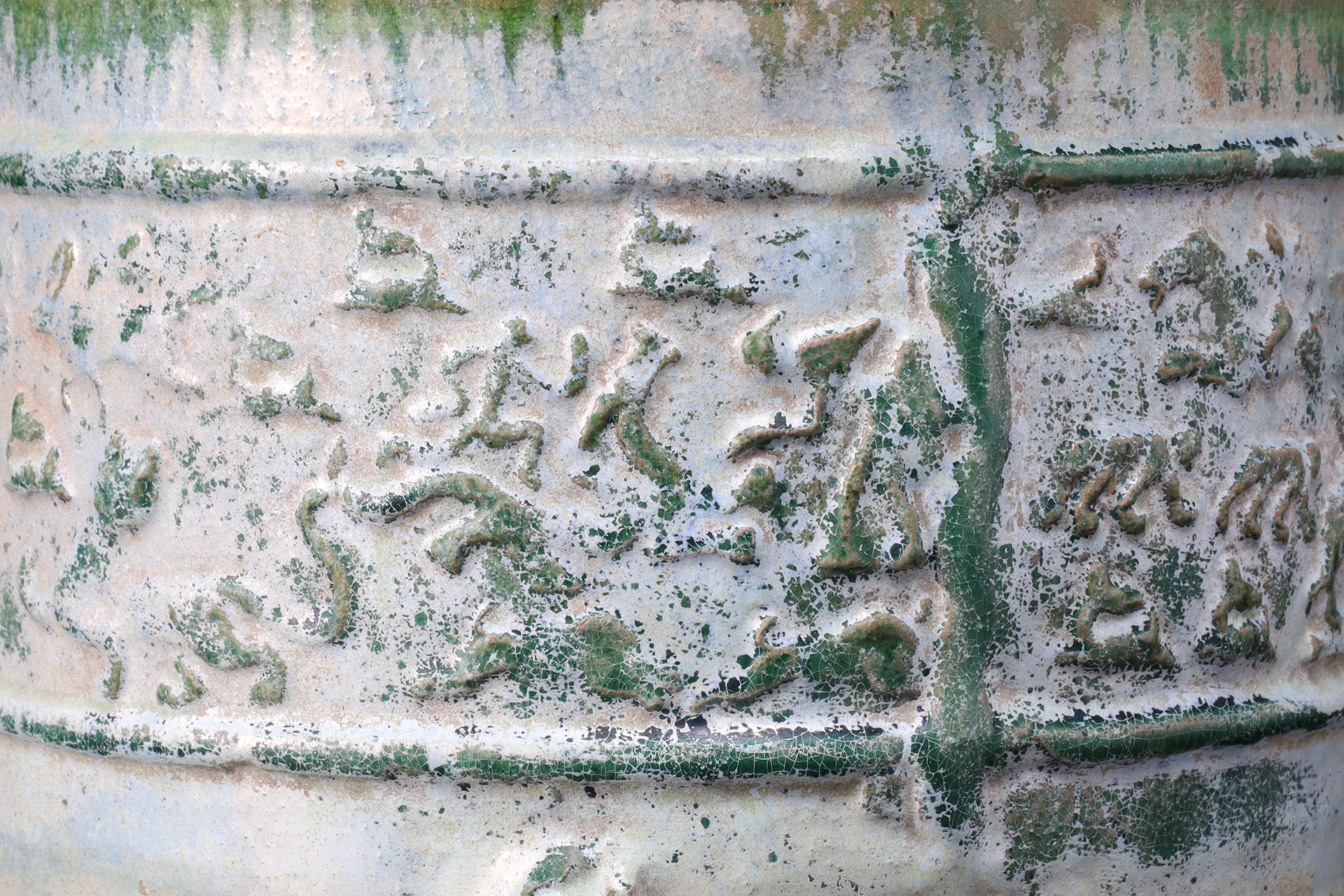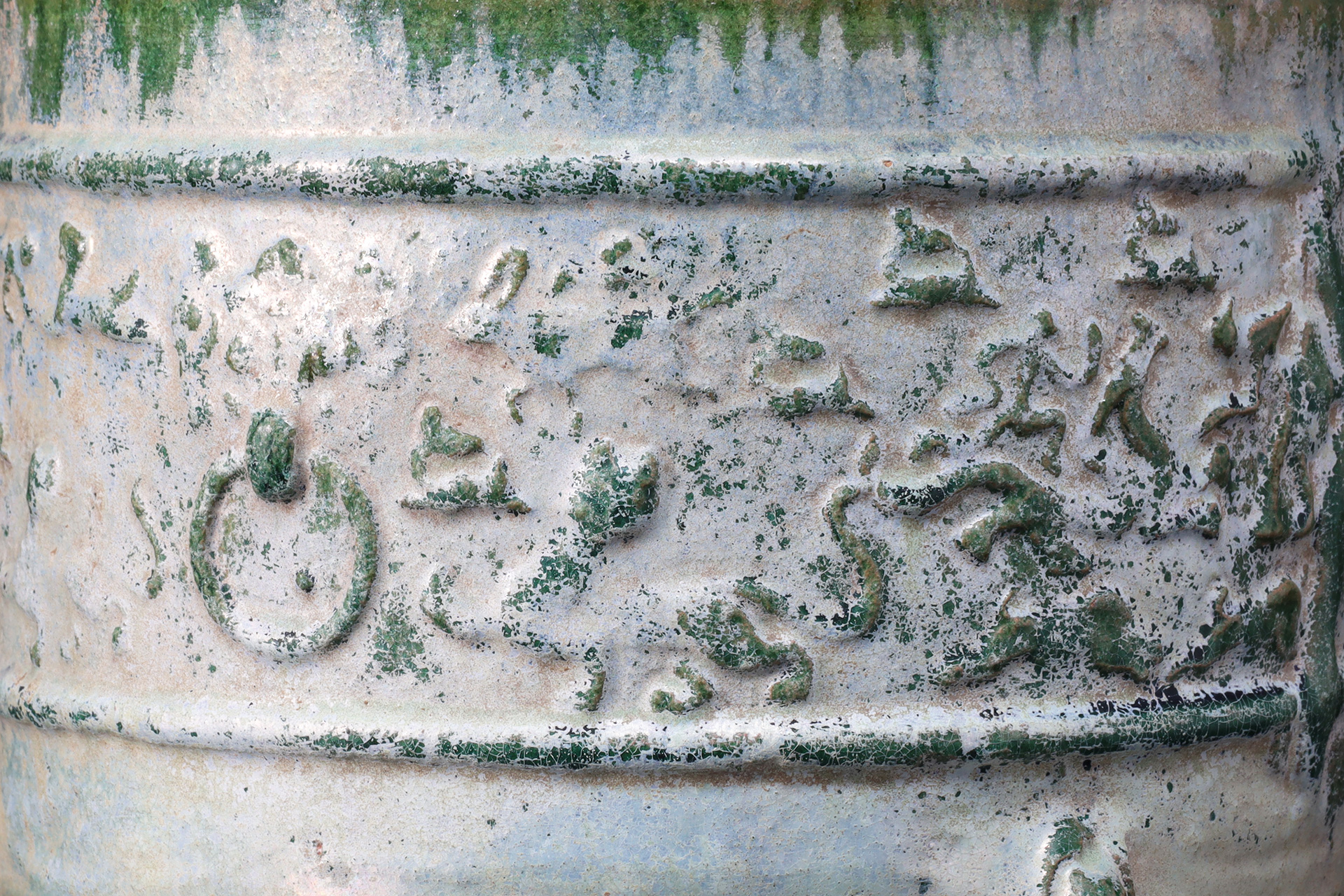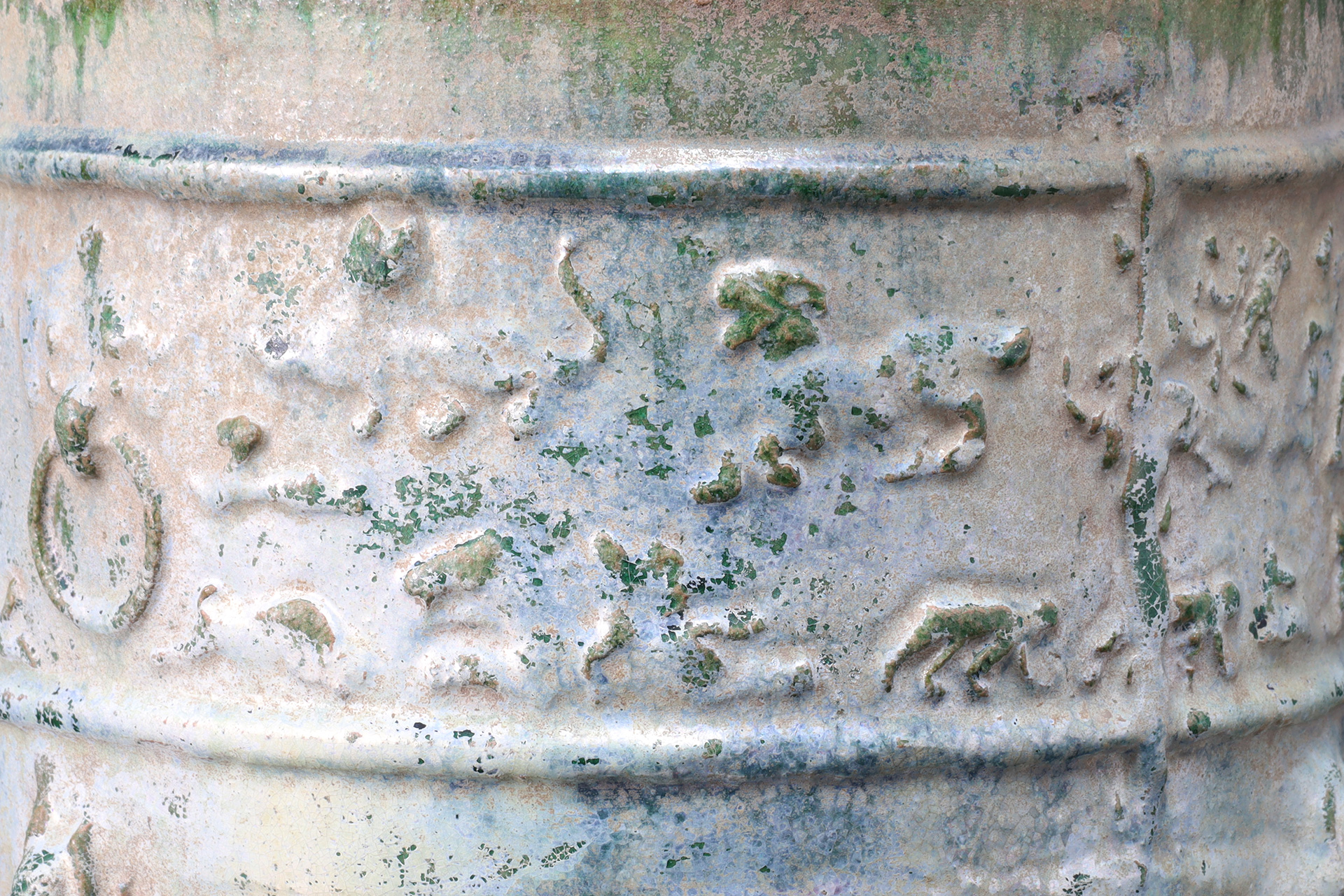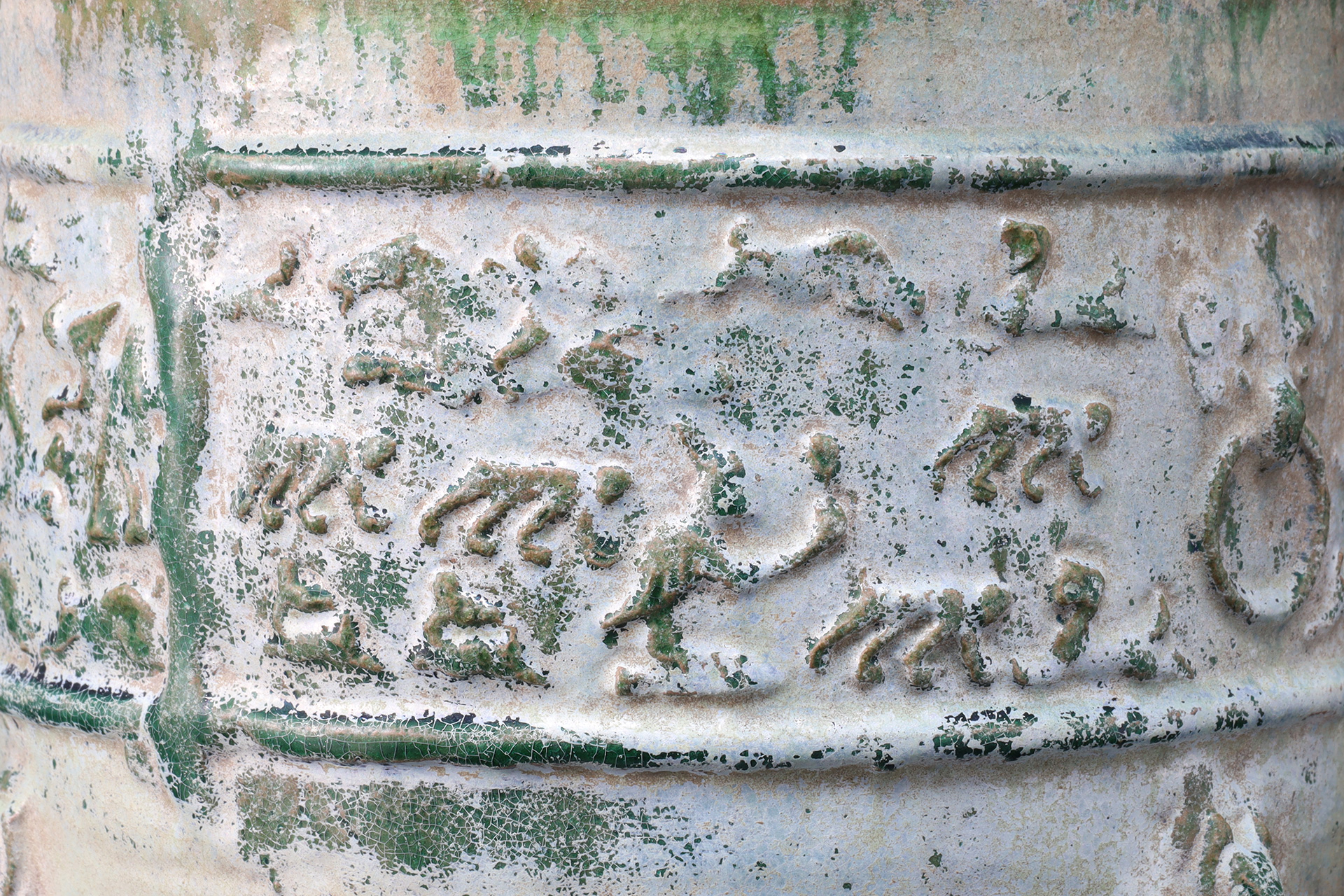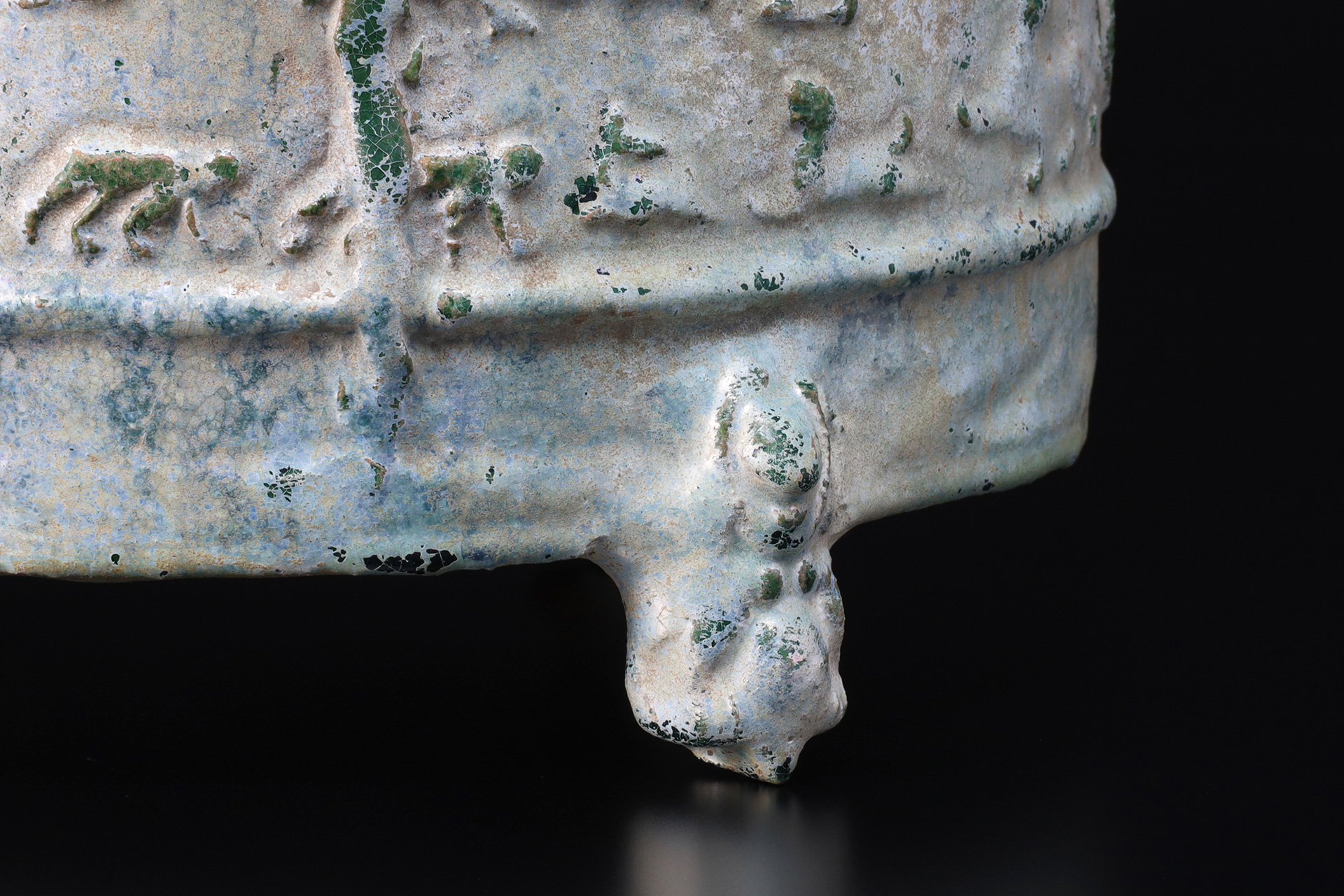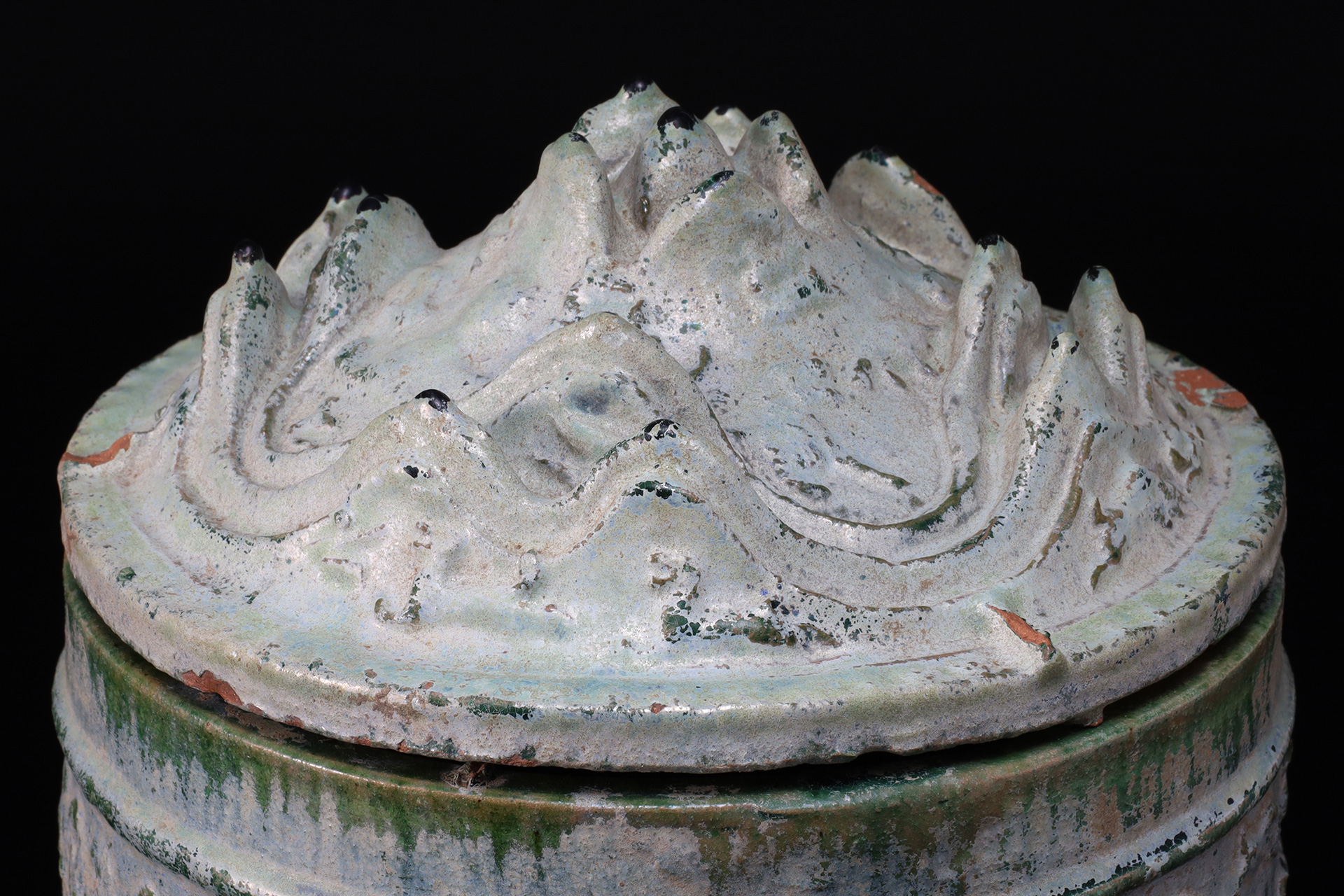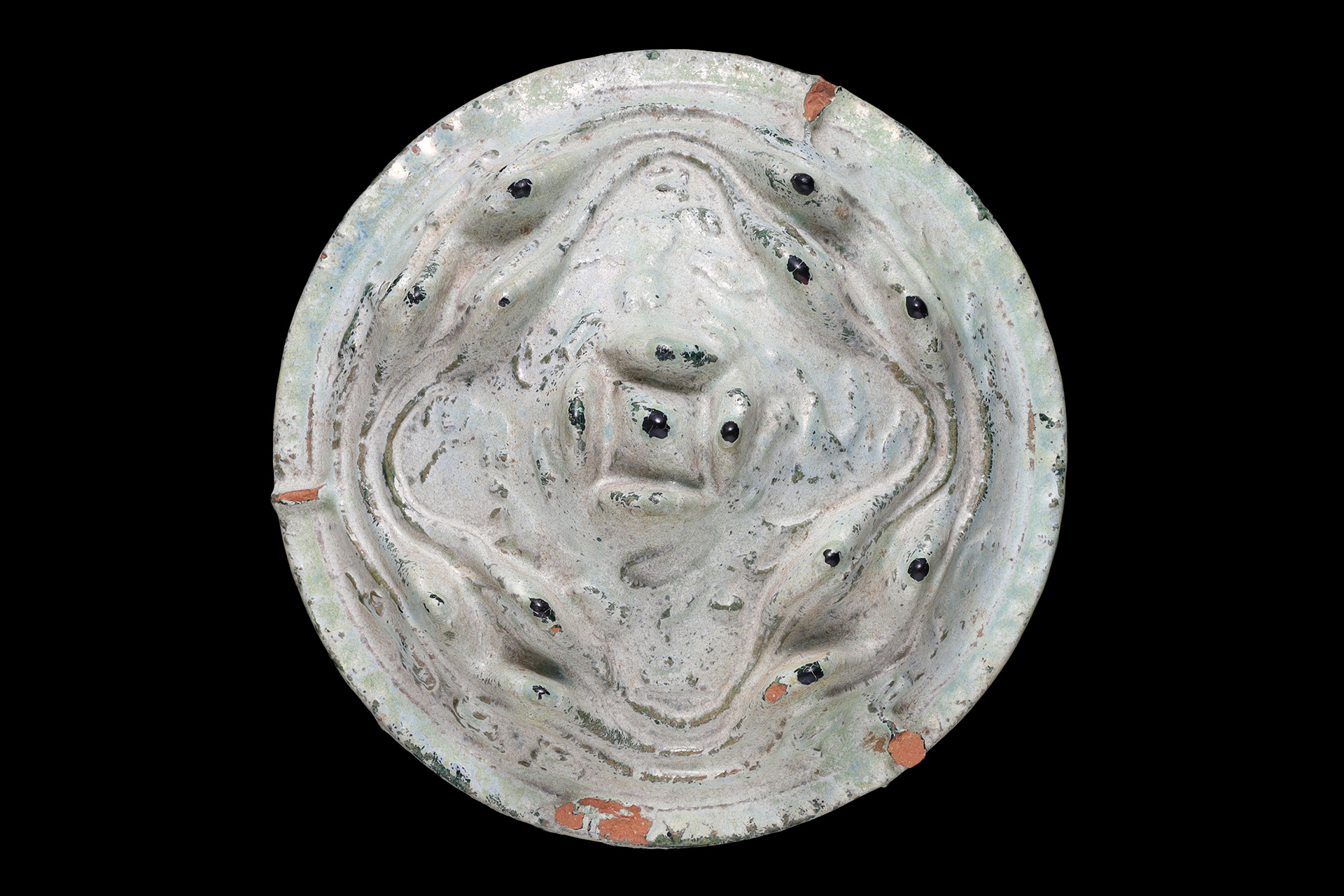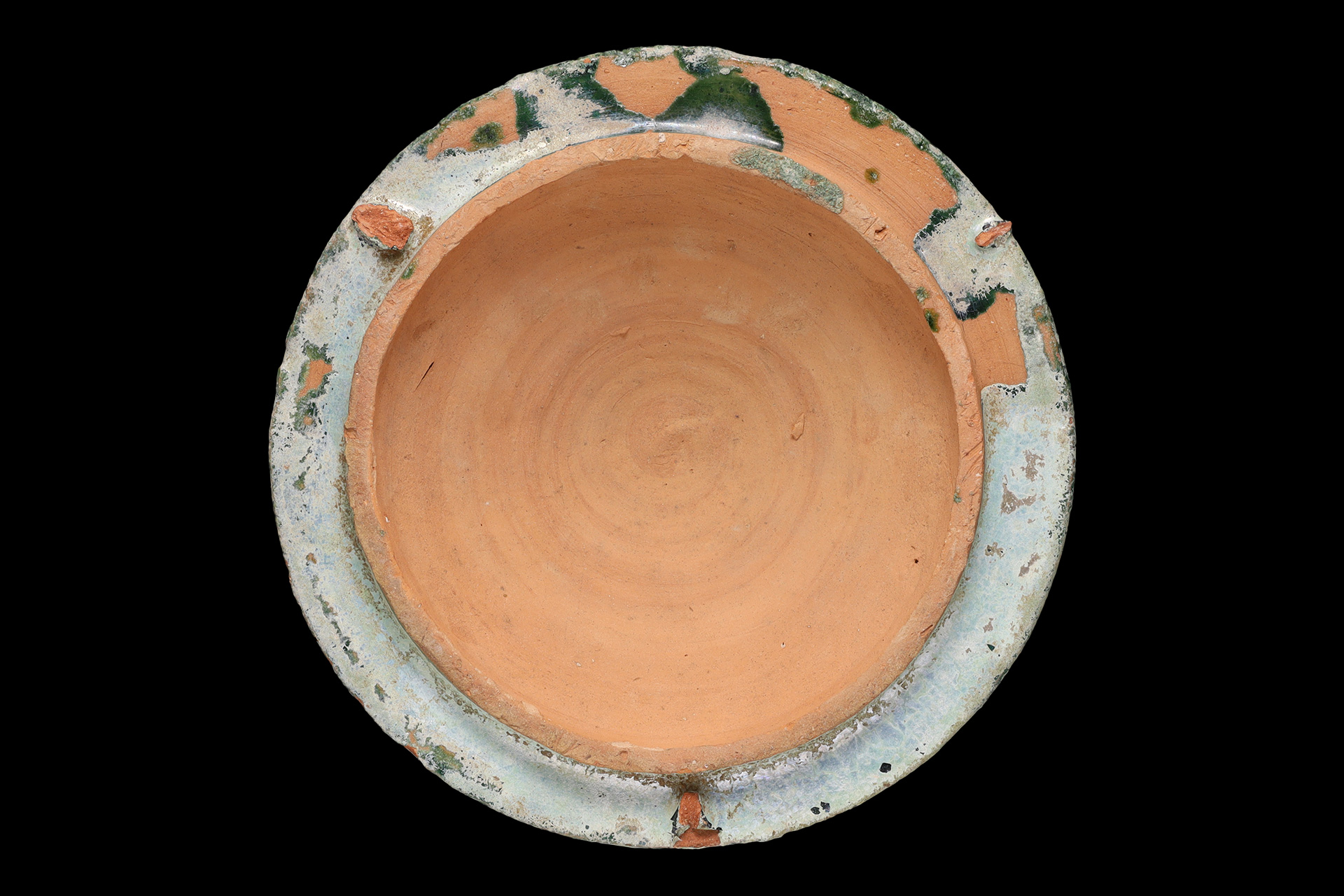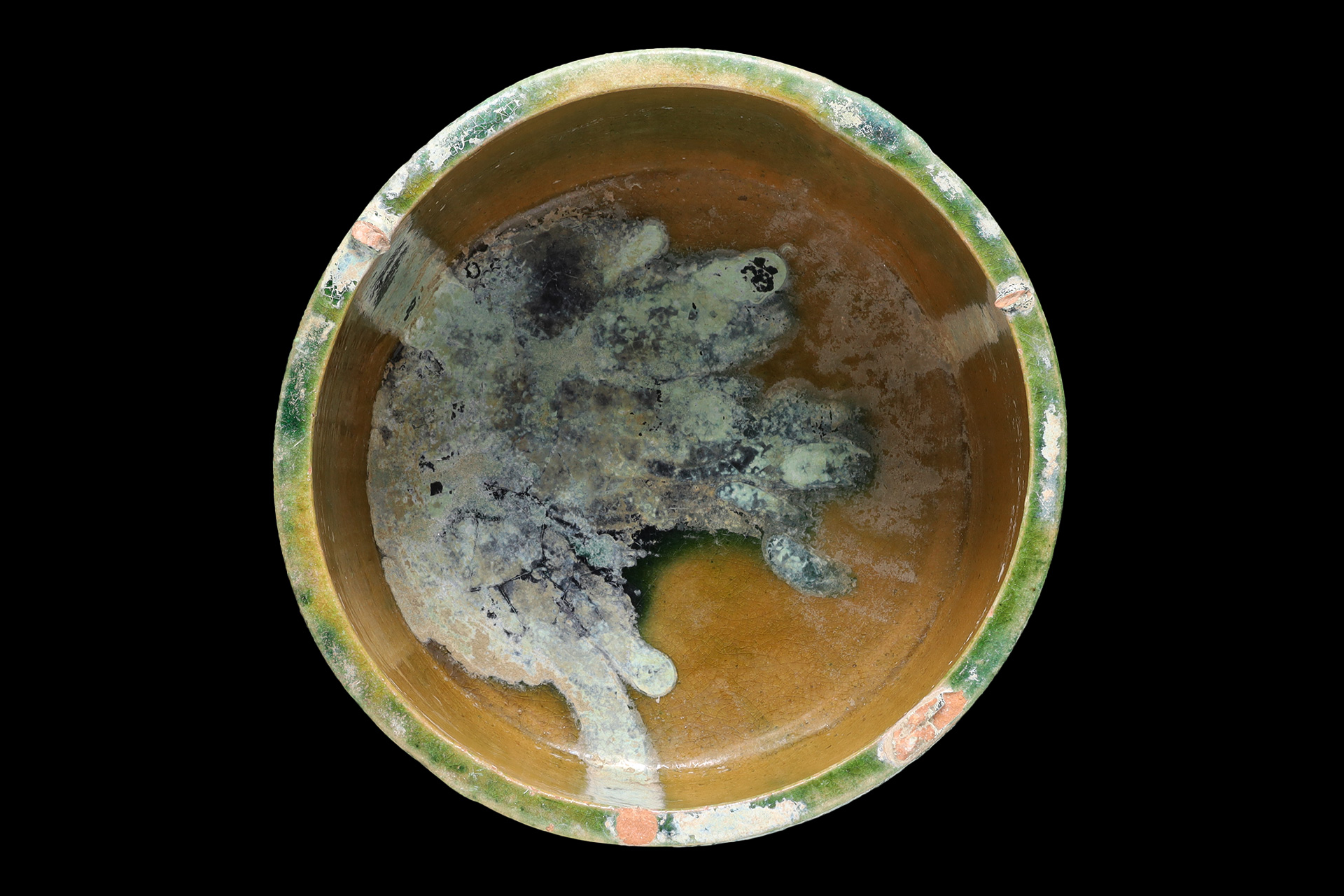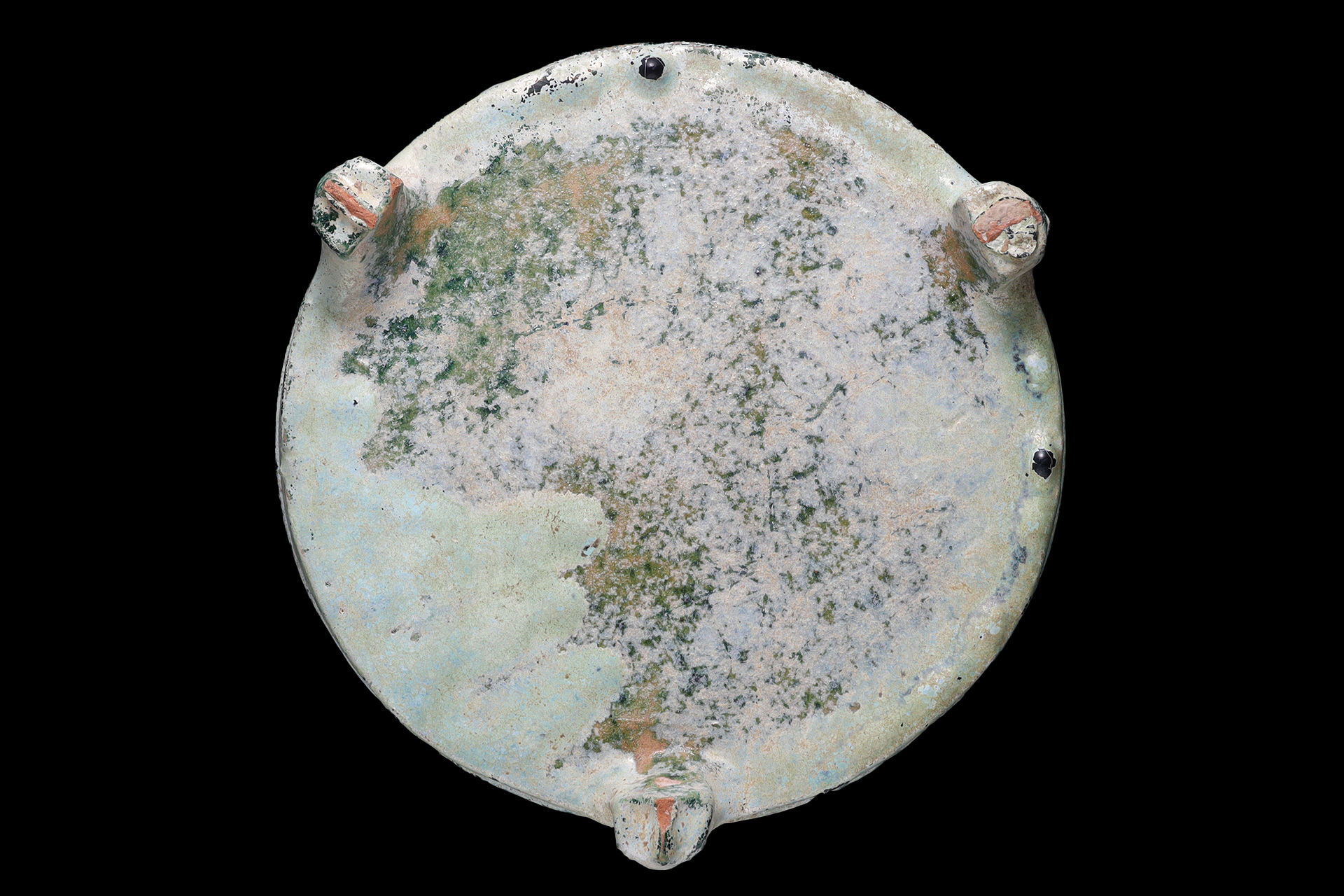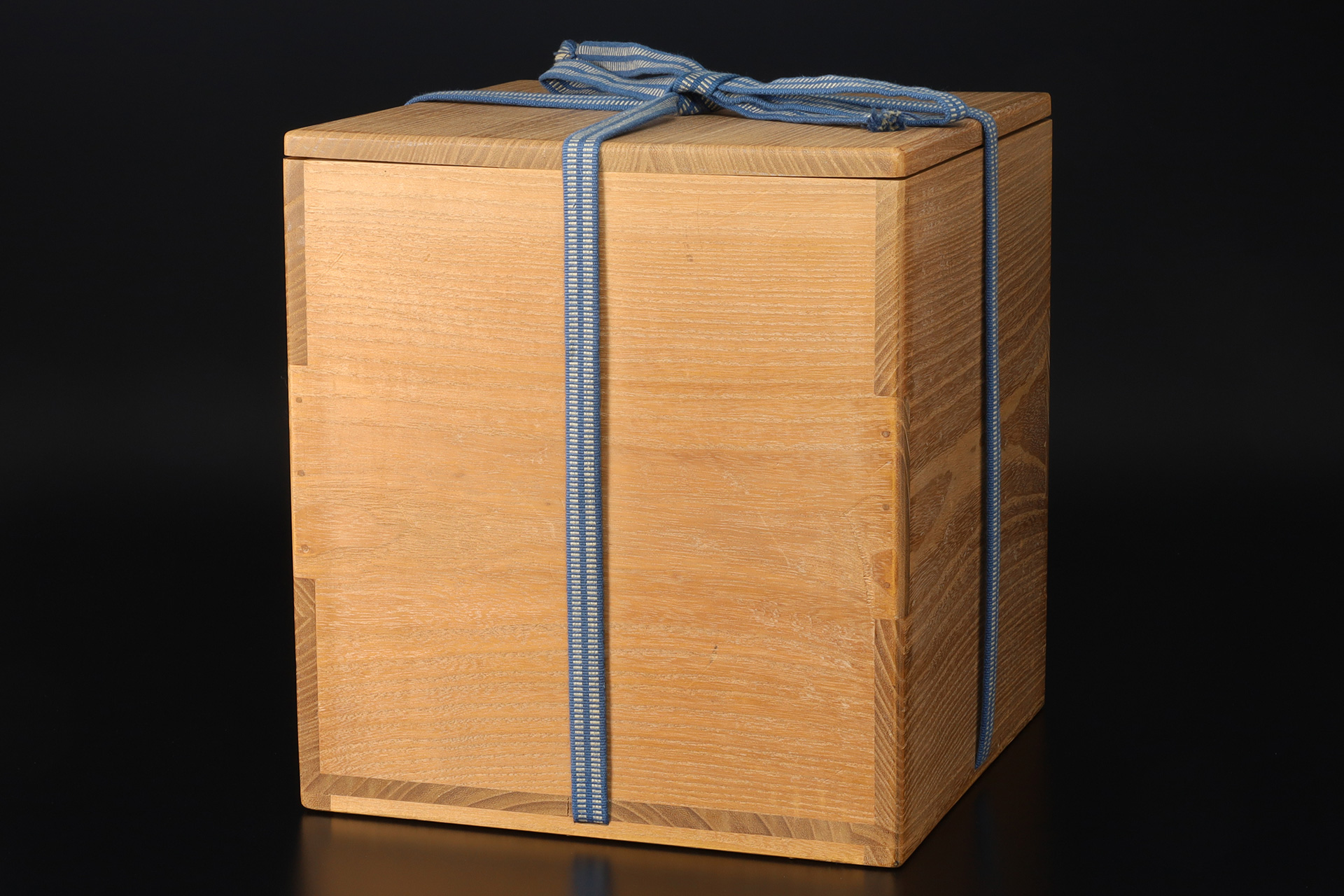The shape of this vessel is modeled after an ancient chinese sake warming vessel. It is a burial accessory made to be buried in a tomb with prayers for the buried person, and it became popular during the later han dynasty, replacing bronze ware. The lid is modeled after mount boshan, where immortals are said to live, and the body is decorated with motifs of beasts and hunters. It seems that the bear(bear foot)is carrying the utopia that is the aspiration of the divine immortal thought. It will create a chic space even when combined with contemporary art.
⇒ Cultural Heritage Online(The External Link)
Inquiry
- Product Code
- 240902-6
- Period
- Later Han Dynasty
1-3th century
- Weight
- 2,310g
- Diameter
- 20.5cm
- Top Diameter
- 19.5cm
- Height
- 22.9cm
- Description
- Paulownia Box
- Condition
- Good Condition
Other than some partial glaze peeling, there is no other noticeable damage and the work is in good condition with beautiful luster.
Han Green-Glaze
Brightly colored lead glazed pottery is a type of burial accessory that represents prayers for the deceased, and was made in large quantities during the han dynasty. In ancient china, the afterlife was thought to be an extension of the present world, and so objects such as jar, tableware, animal, house, and well were created to enable people to live a rich life after death, just as they did in life. The base is fine and contains a lot of iron, and when copper oxide is used as a coloring agent on the lead glaze, the green color is obtained. Low temperature lead glaze evaporates when it reaches temperatures of over 1,000℃, so it was fired at a low temperature of 700 to 800℃. Green-glaze was popular in shaanxi and henan provinces around the 1-3th century of the later han dynasty, and the core workshops were located in the two capitals of chang’an and luoyang. This is because people of this class were concentrated in the suburbs of the capital, and it is inevitable that excavated examples would be concentrated in this area. Many of the green-glaze have a silvery, iridescent coating on their surfaces due to the chemical changes caused by lead in the soil over many years, and are praised for their mysterious beauty and are called “Silverization” or “Laster”. The brown-glaze(colored by iron oxide)that flourished during the western han dynasty faded into the shadow of the heyday of the green-glaze, and the production volume of the later developed green-glaze is overwhelmingly large. Although the glaze is thick and generous, the inside of the jar or bottle is unglazed, and since it was a burial accessory and not a practical item, there would have been no problem as long as the glaze was applied only to the visible parts on the outside. Green and brown glazes are mostly used alone, but occasionally both glazes are used together on the same work of pottery. After applying a brown-glaze over the entire surface, green-glaze is added in some areas or colored with green-glaze. Conversely, there are no known cases of adding brown-glaze to the green-glaze. When these two glazes are used together, the green-glaze becomes unstable and peels off, and there are very few examples of beautiful two colored glazed. Because the firing method used was to overlap the mouths of the jars, the glaze on the rim of the mouth has peeled off, and when the jars were filled upside down in the kiln, the glaze flowed from the neck toward the mouth, causing glaze pooling. Han green-glaze was considered out of reach until around the 1970s, but with china’s reforms and infrastructure development, tombs from the han and tang dynasties were discovered in the 1980s, and large quantities of han green-glaze and tang-sancai ware were brought to japan, upsetting the supply and demand balance. The works that have been treated as masterpieces are different from the large number of excavated artifacts, and are not works that are considered to be all the same. The works, which have been treated as masterpieces, continue to fascinate people with their fresh green-glazed and beautiful silverization.



